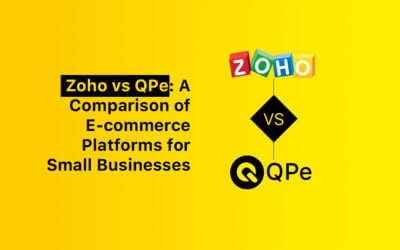Dreaming about turning your passion for styling into a real clothing brand?
Now, you can start a clothing business from home. It’s exciting to bring your designs to life and even make money from them.
Whether you’re an entrepreneur wanting to leave a mark on the fashion scene or a creative ready to launch your first collection, this guide walks you through every step.
We’ll cover everything from choosing a niche to setting up a business that stands out. Ready to launch your home-based clothing brand and succeed in a crowded market?
Let’s combine creativity with smart business moves. This guide will help you start your journey to fashion success. Ready? Let’s go!
Basics of a Home-based Small Clothing Business
Figuring out how to start a clothing business from home might be difficult, but the flexibility and potential rewards make it worth the effort.
But like every other business, even a clothing business from home needs a strong base and mindful planning. However, success requires a solid foundation and careful planning.
Identify Your Niche
- Determine what sets your clothing line apart (e.g., sustainable fashion, streetwear, etc).
- Having a clear focus helps you stand out and attract the right customers.
Logistics and Space
- Set up a dedicated area for storing materials and finished products.
- Organize inventory management, possibly converting a spare room into a storage area.
- Use tools to help track orders and stock efficiently.
Legal and Financial Planning
- Register your business and obtain the necessary licenses, even when operating from home.
- Set up a business bank account for proper cash flow management.
- Ensure taxes and other financial obligations are handled properly.
Branding and Online Presence
- Develop a professional-looking brand
- Have an appealing logo on the website that matches the social media
- Make sure that everything that you post online is put together even if you started a clothing business from home.
How to Prepare to Launch Your Small Clothing Line
Starting a clothing line from home is more than just having good design ideas. You need a solid foundation before jumping in. A little prep now will save you from headaches later.
First, check your workspace. You don’t need a huge area but find a dedicated spot. Keep your materials, samples, and pieces organized.
Pro tip: Pick a clean corner in your home where you won’t get interrupted. You’ll be amazed by what you can do with even a small, tidy space.
Now, let’s talk about money. You can start on a budget, but there are a few must-haves:
- Sewing machine (if you’ll make samples)
- Initial materials
- Marketing tools
- Website setup
- Photography equipment
Starting small helps. A smaller collection lets you test the waters without breaking the bank.
Sort out the business basics early too:
- Simple business plan
- Legal requirements
- Basic accounting
- Insurance
- Tax registration
Speaking of business plans, don’t overthink it. Focus on these key parts:
- Your brand’s angle
- Target customer
- Startup costs
- Sales projections (keep them real)
- Marketing strategy
You’ll also need some skills. You don’t need to master everything, but make sure to know:
- Basic design
- Pattern making (or know where to outsource)
- Fabric knowledge
- Digital marketing
- Customer service

Research the competition too. See what they’re doing right and where they slip. Figure out how you can stand out. But remember, standing out doesn’t always mean being completely different. Sometimes, you just need better quality or service.
Build your support network early. Connect with:
- Other fashion entrepreneurs
- Reliable suppliers
- Potential customers
- Industry experts
- Local business groups
Don’t forget to test your ideas before diving in:
- Show designs to potential customers
- Get feedback on pricing
- Test marketing messages
- Try different materials
- Practice production
Perfection isn’t the goal—preparation is. You’ll learn and adjust as you go. Having a solid base makes everything easier.
Finally, set a timeline. Instead of rushing, plan out the first three months. Focus on key milestones like:
- Finalizing designs
- Ordering materials
- Creating samples
- Building your website
- Planning your launch
That way, you’ll know exactly what to do and when.
Step-by-Step Guide: How to Start a Small Clothing Business from Home
The journey of building a successful clothing business starts with clear, actionable steps. Here’s a detailed breakdown of how to transform your clothing business idea into reality.
Step 1: Identify Your Niche and Target Market:
Finding the right niche sets successful clothing brands apart from the competition. Start by researching market gaps and identifying underserved customer needs in the fashion industry.
Market Research Essentials:
- Study current fashion trends and predictions
- Analyze competitor offerings and pricing
- Review customer feedback on existing products
- Identify specific customer pain points
- Research potential market size
Defining Your Target Audience:
- Consider key factors such as:
- Age range and demographics
- Style preferences and fashion needs
- Shopping habits and budget range
- Lifestyle and values
- Geographic location
Understanding customer preferences helps create products that resonate with the target market. For example, sustainable fashion appeals to environmentally conscious consumers, while luxury streetwear targets fashion-forward young professionals.
Step 2: Develop a Unique Brand Identity:
Brand identity shapes how customers perceive and connect with your clothing line. Creating a memorable brand requires careful attention to several key elements.
Brand Elements:
- Brand name and story
- Logo design and color palette
- Typography and visual style
- Brand voice and messaging
- Packaging design
Brand Values:
- Establish clear brand principles:
- Quality standards
- Design Philosophy
- Customer service approach
- Sustainability commitments
- Social responsibility
The brand identity should reflect consistently across all platforms, from product tags to social media posts. This consistency builds recognition and trust among potential customers.
A strong brand identity helps:
- Stand out in the marketplace
- Build customer loyalty
- Command premium pricing
- Create emotional connections
- Support marketing efforts
Step 3: Source Materials and Find Suppliers:
Quality materials and reliable suppliers form the foundation of a successful clothing line. Strategic sourcing ensures consistent product quality and timely production.

Supplier Research Methods:
– Industry trade shows and exhibitions
– Online wholesale marketplaces
– Local manufacturer networks
– Industry associations
– Professional recommendations
Material Selection Criteria:
– Quality and durability standards
– Price points and order minimums
– Color and pattern options
– Material care requirements
– Sustainability certifications
Building Supplier Partnerships:
– Clear communication channels
– Quality control standards
– Payment terms agreement
– Delivery schedule planning
– Sample testing processes
Step 4: Craft Your First Collection:
Creating a cohesive first collection establishes brand identity and market position. Focus on balanced design elements that appeal to target customers while maintaining practical production capabilities.
Collection Planning:
– Seasonal trend analysis
– Core piece selection
– Color palette development
– Size range determination
– Production timeline
Design Elements:
– Signature style features
– Material combinations
– Construction details
– Finishing touches
– Packaging presentation
Production Management:
– Technical specifications
– Sample development
– Quality checkpoints
– Inventory planning
– Production scheduling
Step 5: Set Up an Online Store:
A well-designed online store works like your digital storefront to reach customers everywhere. Qpe is an e-commerce platform that helps your business grow online.
Here’s what you can get with Qpe:
Clean Website that Works:
- User-friendly navigation using customizable templates
- Secure payment systems built-in
- Mobile-friendly design for all devices
- Clear product categories that make browsing simple
- Fast load times for smooth shopping
Product Showcase:
- High-quality photo tools
- Detailed product descriptions
- Size guides built right in
- Styling suggestions to help customers
- Easy-to-follow care instructions
Improved Customer Experience:
- Simple and fast checkout
- Multiple payment options work seamlessly
- Clear shipping policies for transparency
- Easy return setup
- 24/7 customer support through Qpe
Whether you’re starting or looking to expand, Qpe has something for every business. If you need tools to stand out in the e-commerce world, Qpe is the platform to explore.
Step 6: Pricing Strategies for Profitability:
Effective pricing strategies balance market competitiveness with sustainable profits. Smart pricing decisions determine long-term business success and growth potential.
Cost Analysis:
– Material expenses
– Production costs
– Overhead charges
– Marketing budgets
– Shipping expenses
Pricing Models:
– Keystone markup method
– Value-based pricing
– Competition-based rates
– Bundle pricing options
– Seasonal adjustments
Profit Optimization:
– Margin calculations
– Volume discounts
– Special offer planning
– Wholesale pricing
– Retail mark-ups
Step 7: Market Your Clothing Line Effectively:
Strategic marketing creates brand awareness and drives sales. Develop comprehensive marketing plans that reach target customers through multiple channels.
Digital Marketing Channels:
– Social media platforms
– Email campaigns
– Influencer partnerships
– Content marketing
– Paid advertising
Brand Promotion:
– Lookbook creation
– Style guides
– Product showcases
– Behind-the-scenes content
– Customer features
Marketing Calendar:
– Seasonal campaigns
– Product launches
– Sale periods
– Content scheduling
– Event planning
Step 8: Manage Orders, Shipping, and Customer Service:
Efficient order management ensures customer satisfaction and repeat business. Develop systems that handle operations smoothly and maintain service quality.
Order Processing:
– Inventory tracking
– Order confirmation
– Packaging standards
– Shipping labels
– Tracking updates
Shipping Solutions:
– Carrier selection
– Shipping rates
– Delivery options
– International shipping
– Return handling
Customer Support:
– Response protocols
– Issue resolution
– Return Policies
– Size exchanges
– Customer feedback
Step 9: Analyze Feedback:
Customer feedback drives product improvement and business growth. Regular analysis helps identify trends and opportunities for enhancement.
Feedback Collection:
– Customer reviews
– Sales data
– Return reasons
– Social media mentions
– Support inquiries
Performance Metrics:
– Sales conversion rates
– Customer satisfaction
– Product Popularity
– Return percentages
– Revenue growth
Growth Planning:
– Product improvements
– Collection expansion
– Service enhancements
– Market adaptation
– Scale opportunities
These strategic steps create a framework for sustainable business growth. Regular review and adjustment of these elements ensure continued success in the competitive fashion market.
How to Market Your Small Online Clothing Store

Create a Captivating Online Presence
Your website is your online store’s first impression. Make it count.
Make Your Website Pop
- Clean, fresh design
- Clear product photos from every angle
- Simple and engaging product descriptions
- Easy navigation
- Fast load times
- Size guides and measurement tips
Tell Your Brand Story
Explain what makes your brand unique. Maybe you started small or focus on sustainable fashion. Whatever it is, be real and tell your story in a way that connects.
Focus on Mobile
Over 70% of shoppers use their phones. So, make sure your site works perfectly on mobile devices.
- Large, easy-to-click buttons
- Simple forms
- Smooth checkout process
- Test on different devices
Leverage Social Media for Brand Awareness and Sales
Social media is your fashion runway. Use it to connect with people and show off your products.
- Post daily outfit ideas
- Show behind-the-scenes moments
- Use Instagram Shopping tags
- Share fun Reels
- Host live shopping events
- Post customer photos
- Make boards for different looks
- Pin your products often
- Share style tips
- Highlight seasonal collections
- Use rich pins to show product details
- Run shopping ads
Leverage Email Marketing
Keep customers excited with emails they actually want to open.
- Warm welcome for new subscribers
- Share exclusive offers
- Send style guides
- Celebrate customer birthdays
- Remind them about abandoned carts
- Keep your list engaged with fresh content
Influencer Partnerships
Find influencers that align with your brand.
- Focus on real engagement, not just followers
- Build long-term partnerships
- Track how well their content performs
- Let them create their own content
- Share their posts on your channels
Create Content That Converts
Give customers content that helps them choose and love your products.
- Style guides
- Outfit ideas
- How-to videos
- Fashion tips
- Size comparisons
- Customer stories
Focus on Customer Service
Happy customers bring in more customers.
- Respond quickly
- Make returns simple
- Send tracking updates
- Ask for feedback
- Solve problems fast
- Show appreciation
Stay Ahead of Trends
The fashion world moves fast. Keep up by:
- Watching fashion forecasts
- Listening to your customers
- Watching competitors
- Following influencers
- Reading industry news
- Adapting quickly
Follow these tips, and you’ll grow your online clothing store into something big!
Conclusion
Marketing your online clothing store takes work, but it’s worth it. Start with the basics, test what works for your brand, and keep improving.
Remember, building a successful fashion brand takes time – focus on connecting with your audience and providing value.
Success in online fashion retail comes from combining creativity with smart business strategies. Stay authentic, keep learning, and always put your customers first.
Your unique style and attention to detail will help your brand stand out in the crowded online fashion world.
Frequently Asked Questions
How Do I Find Reliable Suppliers for My Clothing Line?
Start by researching online directories and attending trade shows. Ask for samples, check reviews, and start with small orders. Build relationships slowly and communicate clearly about your needs and quality standards.
Can I Run a Clothing Business from Home Without Prior Experience?
Absolutely! Many successful brands started from home. Focus on learning the basics, start small, and grow gradually. Use online resources, join fashion communities, and learn from others’ experiences.
How Do I Balance Creativity with Business Management?
Set specific times for creative work and business tasks. Use tools to automate routine work, consider hiring help for tasks outside your expertise, and always keep learning. Remember, both creativity and business skills are crucial for success.



